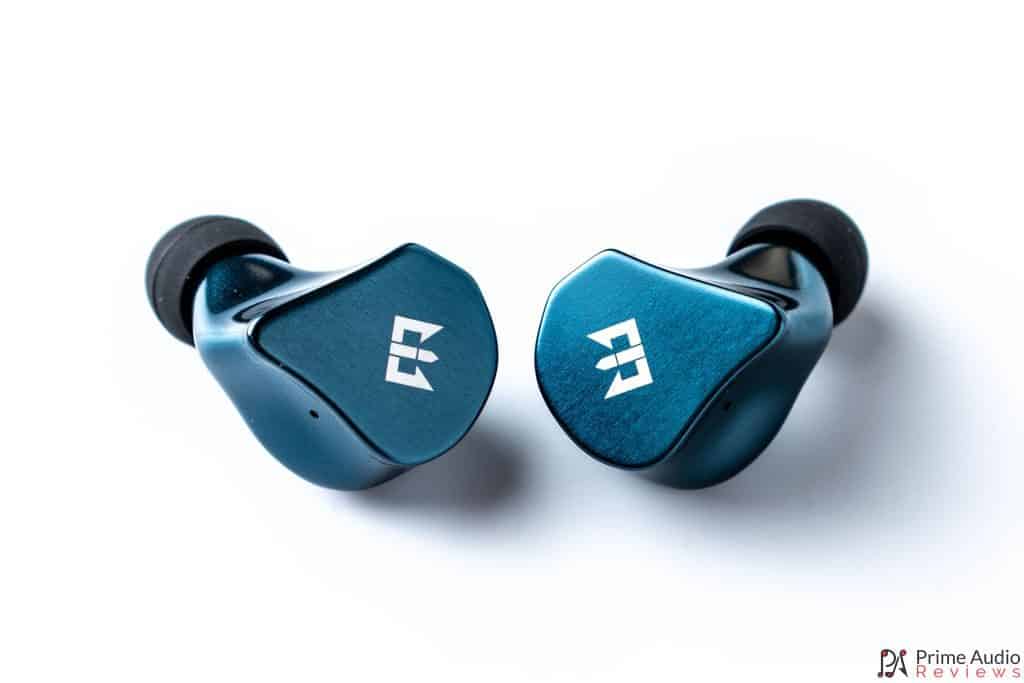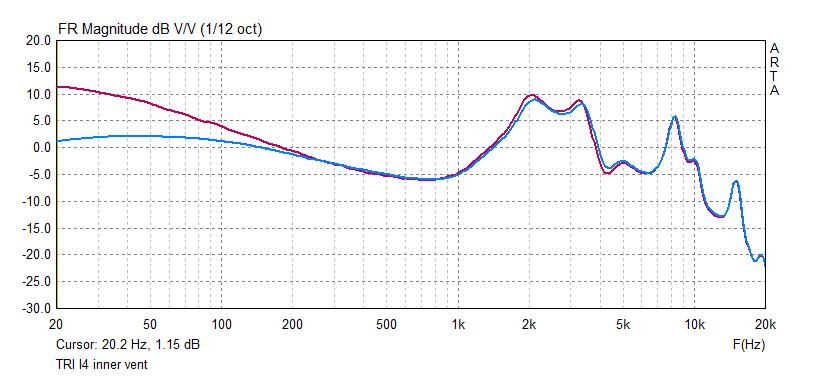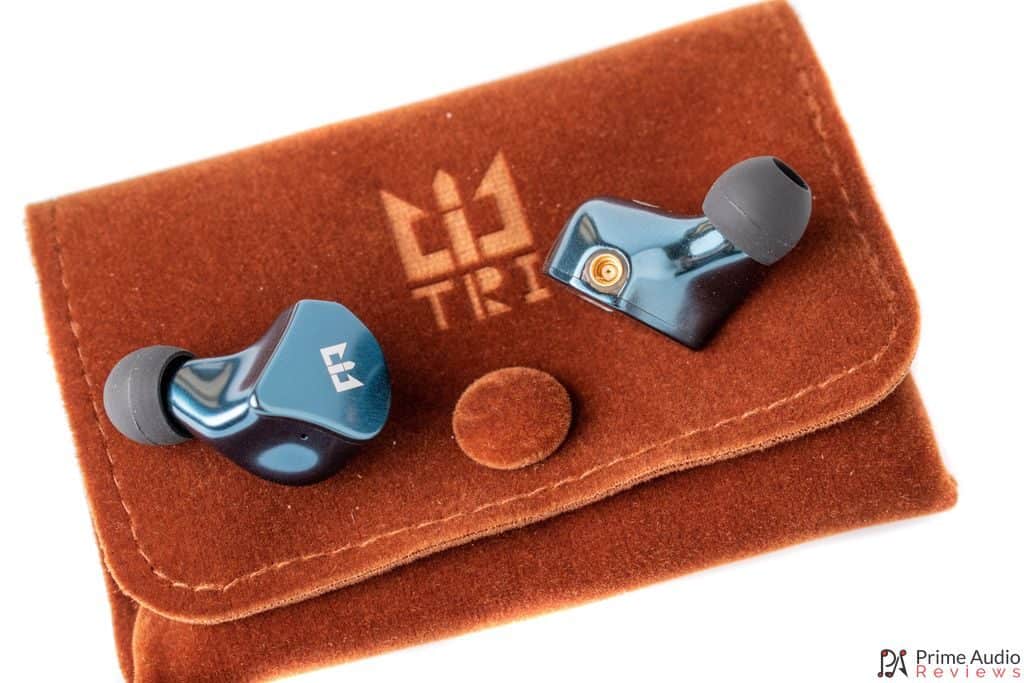Hey there fam. Today, we’re reviewing the TRI I4, a dual hybrid earphone with 1 composite dynamic driver and 1 Knowles balanced armature driver. The I4 has high precision CNC aluminium alloy shells plus an electronic crossover.
This sample was provided for the purpose of an honest review. All observations and opinions here are my own based on my experience with the product.
TRI I4 Review
- Simple, attractive, rugged build
- Eartips selection
- Clarity, detail
- Slightly lean midrange
- Some upper midrange glare at high volume
Package and Accessories
TRI’s I4 comes in a black box with a brand logo embossed on the lid. As you open the box you’re greeted with the I4 earphones seated in a black foam insert. Just below the foam is a brown felt carrying pouch.
Also in the box is the detachable MMCX cable and a good selection of eartips including 1 pair of foam tips, 3 pairs of back wide-bore silicone tips and 3 pairs of grey/green narrow-bore silicone eartips. That is a pretty nice bundle, especially considering TRI did not skimp on the build or materials.

Build Quality and Design
The TRI I4 shells are CNC machined from aviation-grade aluminium alloy and come in two colours – blue and champagne. With its polished, anodized surface and laser-engraved logo, the I4’s appearance is rather striking and the build feels premium for an IEM in this price range.
There are two vents – one on the rear side and one on the inner shell, near the nozzle base. Speaking of the nozzles, they’re shorter than average but have a well-defined lip and the various eartips I tested all felt secure and didn’t come off unintentionally.
Internally, the I4 has one 10mm bio-cellulose diaphragm driver plus one customized Knowles balanced armature driver with an electronic crossover.

Comfort and Noise Isolation
When you can forget that you have earphones in your ears you know they must be comfortable. The I4 are a good fit for me and I can listen for hours at a time without getting hotspots or needing to constantly readjust.
Noise isolation is slightly below average for an IEM with this kind of shape but it is still more than enough for use on public transport or a walk through a busy shopping mall. There is some noise leak present too, so the I4 might not be the best choice for blasting in a quiet office or library.

Cable
The included cable is a 4-core with a black TPU sheath. It’s quite supple, handles well and has little microphonics. At the top are the hardened rubber MMCX connector housings, followed by some pre-formed ear guides. There is a chin slider above the plastic Y-split and the cable terminates in an L-shaped 3.5mm plug.

Sound
Gear used for testing includes the Shanling UP2 and FiiO M6 as portable sources. Once again on the desktop, FLAC files were fed via Foobar2000 on my PC to the FiiO K3. The TRI I4 earphones are reasonably easy to drive and have no demanding source requirements. The I4 has a warm, V-shaped signature with meaty bass, good overall clarity and a sparkly treble.
This is a compelling reminder that we should not judge IEMs strictly on graphs alone. Looking at my initial measurements, the graph looked as though there should be a very light bass and a huge upper midrange boost and a questionable tonal balance.
My ears told me that was not what I was hearing so I did some experimenting by covering up the vents on the shell one at a time. Blocking the vent on the rear side did not affect the sound at all. When I covered the inner vent near the nozzle base, the change was drastic. Suddenly there was far more bass presence, while the midrange and treble were mostly unaffected.
When the earphones are in your ears, the inner vent is naturally blocked, probably not completely but enough to make a big difference. As a result, I’d say what I hear with the I4 is somewhere between the red and blue on the graph.

Bass
The I4 has a solid, impactful bass response that adds warmth to the overall presentation. Sub-bass extension is very good and can really shake things up with a powerful rumble. The mid-bass is punchy and impactful and is more than sufficient to stay in line with the upper midrange. I4’s slam doesn’t have the greatest definition but it has a reasonable amount of texture and control.
Mids
In the midrange, there’s good clarity and a pleasing tone. Male vocals sit back a little but have good articulation and sufficient density. Lower midrange notes are a little thin but have enough warmth to sound natural. Female vocals are more upfront and vivacious and guitars have a pleasing amount of texture.
Treble
The I4’s treble is lively but manages to avoid sibilance and sharpness. A peak at 8kHz gives the midrange clarity and air, as well as bringing the lower treble forward. It’s not an ultra-detailed treble but at the same time, it stays fairly smooth. Another bump in the upper treble gives things some sparkle and zing.
Soundstage
The I4’s soundstage has reasonably large dimensions and is slightly wider than it is deep, however, it tapers off pretty quickly in front of the listener. Imaging is good, giving vocals sufficient size, even though they’re pushed back a little. Instrument separation is decent but things can start bunching as upper midrange sounds intensify.

Comparisons
Astrotec BX70
The Astrotec BX70 (review here) has a single 10mm dynamic driver and mirrored faceted faceplates. It comes with both a wired and a Bluetooth cable. BX70 has more sub-bass roll-off and a more emphasized but slower mid-bass. This gives it a much warmer tonality, a thicker midrange and can also lead to some bass bloat.
Vocals have more body and richness on the BX70 but at the same time, sound a little veiled compared to the I4. The I4’s midrange notes are leaner with faster transients, giving it a cleaner but more analytical presentation.
BX70’s 6kHz peak can cause some sharpness but it doesn’t appear often. In the treble, the BX70 is smooth but doesn’t have the same level of extension or detail as the I4.
Tin Hifi T3
Tin Hifi’s T3 (review here) is a dual hybrid earphone with 1 dynamic and 1 balanced armature driver. It has less bass quantity but a similar level of extension. T3’s bass is slightly faster and transitions more smoothly into the lower midrange, giving it more body and warmth.
What made the T3 (and the T2 before it) so popular among enthusiasts was its linear but musical tuning and this is where it really differs the most from the I4. The T3’s midrange is much more in line with the bass and treble while the I4’s mids are more recessed and distant with less body and density. While this does give it a larger stage, it’s not as engaging or upfront.
Both of these IEMs have an 8kHz peak which adds clarity and sparkle but the T3’s more emphasized 4-7kHz region means it can sometimes exhibit some sibilance. In the upper treble, the two are again similar but the I4 sounds a little airier and more spacious.

Conclusion
For a first release, the TRI I4 marks a promising start for this new brand. The build quality is exceptional and the shells are comfortable. It has an entertaining and detailed sound that can confidently compete with other IEMs in its price segment and I look forward to seeing where TRI goes from here.
Specifications
- Impedance: 12Ω
- Earphone sensitivity: 103dB/mW
- Frequency range: 20-40000Hz
- Driver configuration: 1x 10mm composite dynamic driver + 1x Knowles balanced armature driver
- Plug Type: 3.5mm Straight Plug




